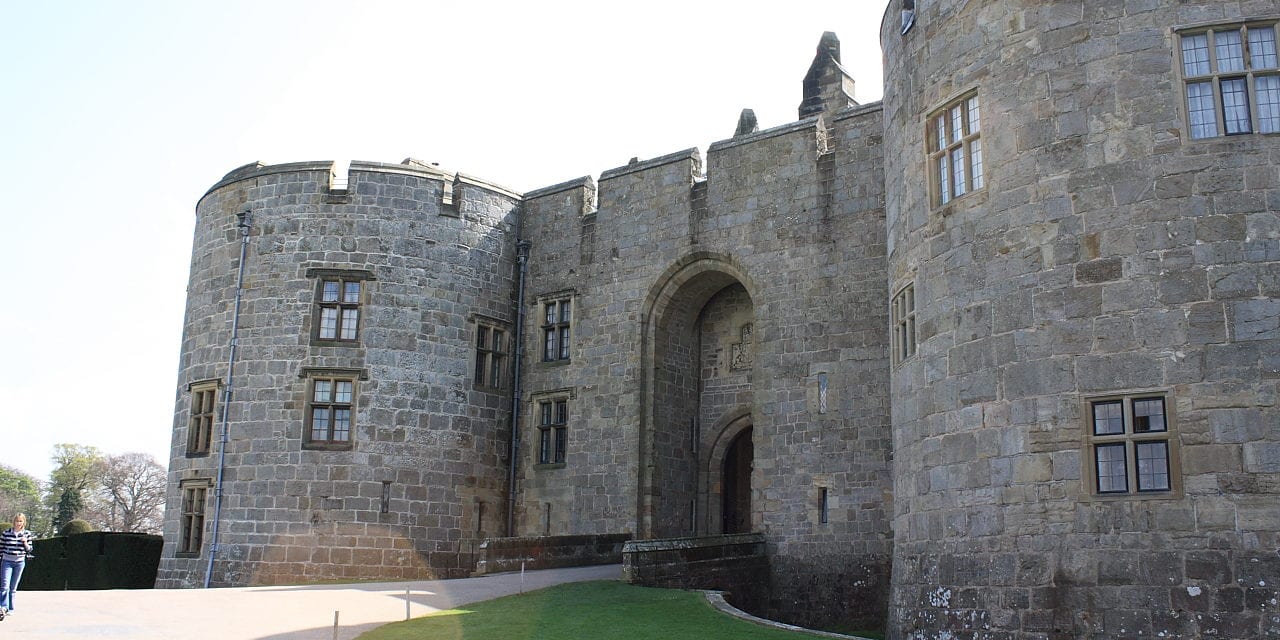

Chirk Castle has stood sentinel over the Welsh Marches for more than 700 years, one of a chain of 13th century fortresses built to suppress the pesky Welsh.
In 1282 Llywelyn ap Gruffudd, King of Wales, was eventually defeated by Edward I, King of England, who speedily began a programme of castle building along the Welsh bornders.
Work began on Chirk Castle in the last decades of the 13th century, one of three new lordship castles built by men in whom Edward placed considerable trust. The castle project at Chirk was executed by Roger Mortimer of Chirk probably under the guidance of master builder James of St George and with help from the King’s builders.
In 1563 Elizabeth I gave this desirable royal residence to her favourite Robert Dudley, Earl of Leicester, but some 27 years later Chirk Castle became one big headache for the Countess of Warwick until a generous benefactor came to her rescue.
Anne Russell was born c1548, the eldest of Francis Russell, 2nd Earl of Bedford’s seven children by his first wife Margaret St. John. Little is known of Anne’s childhood, but it is likely she spent her early years at the Russell family home Chenies in Buckinghamshire. She entered Elizabeth’s household whilst still a child and before the Princess acceded to the throne in 1558, possibly through the influence of her Bedford relatives or perhaps through the continuing Tudor/St John affiliation – Elizabeth and Anne were 4th cousins once removed and traced their joint ancestry back to Margaret Beauchamp.
Anne served first as a Maid of Honour and later as a Gentlewoman of the Queen’s Privy Chamber where it is said she was a ‘very effective advocate and medium for submitting petitions and letters’ and a pivotal woman in Elizabeth’s court.
In 1565, aged about 16, Anne was married to Ambrose Dudley, Earl of Warwick in a match brokered by her father and the groom’s brother Robert Dudley.
The Dudley family had a long and close association with the Royal family – almost too close for comfort in the turbulent Tudor times.
John Dudley, 1st Duke of Northumberland, had attempted to place his daughter in law, Lady Jane Grey, on the throne following the death of Edward VI in July 1553.
This little scheme saw him end up in the Tower with five of his sons, including Ambrose, who, unlike his father, escaped execution. After a sweaty eighteen months in the London fortress, Ambrose was pardoned and released and soon returned to royal favour.
The wedding took place on November 11 in the Royal chapel at the Palace of Whitehall with the Queen in attendance and has been described as an extraordinary court event, complete with banquets and tournaments.
Anne was some 20 years younger than her husband and as his third wife, she was his last shot at producing an heir, something both Dudley brothers lacked, which is how more than 20 years later the childless Anne came to inherit Chirk Castle and a barrow load of Dudley debts.
Robert Dudley died in 1588 and Anne’s husband Ambrose in 1590 leaving her with a number of properties and £7,000 in debt, which adds up to about £15 million at today’s values.
And then along came Sir John St John, 2nd Lord St John of Bletsoe. Now the St John men haven’t always done the gentlemanly thing. Those from the cadet Lydiard Tregoze branch of the family have included a murderer, an attainted politician, gamblers, adulterers – well you get the picture. But here we meet Sir John, who like Anne hails from the senior Bletsoe branch of the family and seems to be a jolly good egg.
John and Anne were first cousins – Anne’s mother Margaret St John was the sister of John’s father Oliver St John.
John had served as MP for Bedfordshire in 1559 and again in 1563-67. In 1585 he was given the dubious honour of guarding Mary Queen of Scots during her incarceration at Tutbury Castle, an appointment which he fought against and only reluctantly accepted. (See, I said he was a good egg.)
Just as Anne was beginning to tear out her hair, along came John and bought Chirk Castle – I’m guessing the last thing on his Christmas wish list that year was a cash guzzling castle in North Wales. Anyway, he paid her £6,000, almost wiping out her debt at one fell swoop. Now was that a fair price I hear you ask? John sold it to Sir Thomas Myddelton in 1595 for £5,000, so in fact he lost out on the deal.
Huzzah – let’s hear it for at least one good St John man!
In 1602 Anne got shot of another property – a cottage and garden in Stratford upon Avon that she sold to one William Shakespeare.
Anne continued to live at court where she remained a close confident of the Queen’s and was with her when she died at Richmond Palace on March 24, 1603.
Following the Queen’s death Anne returned to the Dudley ancestral home at North Hall, Northaw approximately an hour down the M1 from her childhood home at Chenies across the Hertfordshire/Buckinghamshire border. She died there on February 9, 1604, having previously requested that she be interred with her ancestors in the Bedford Chapel in the parish church of St Michael, Chenies.
Many thanks to Sonia St John for her research into the Dudley debt and Chirk Castle
Visit the Friends of Lydiard Park website.